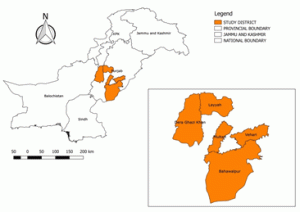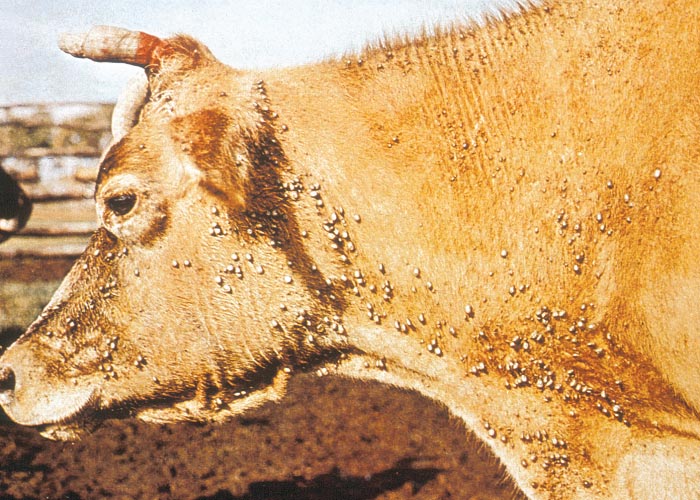By Dr Muhammad Abdul Basit
The livestock sector plays a vital role in the economy of agriculture-based countries like Pakistan. The livestock sector has emerged as the largest sub-sector in agriculture contributing 11.5% to the overall GDP and 60.1% to the overall agriculture according to the Economic Survey of Pakistan 2020-2021.
Being an agricultural country, about 8 million rural families of Pakistan are dependent on the livestock animals like goats, cattle, sheep, buffalo, and camel for their earning as well as fulfillment of milk and meat requirements. The share of the livestock sector in total exports is about 3.1% among which the bovines, sheep, and goat population play a significant role in the economic uplift of the country in terms of meat, milk, hides, and wool production.

Among diseases infecting the ruminants, tick-borne maladies are among the diseases causing poor health and production as well as huge economic losses. Being located in tropical and subtropical areas of the world, the climate remains hot and humid in Pakistan which favors the growth and survival of arthropod vectors especially ticks. Due to presence of ticks, the livestock animals including small and large ruminants and equines population in Pakistan face numerous tick-borne maladies like anaplasmosis, theileriosis, and babesiosis each year.
Among tick-borne diseases, Ehrlichiosis is a neglected but emerging and prevailing issue of livestock animals caused mainly by the rickettsial organism, Ehrlichia ruminantium, which is transmitted mainly by the Amblyomma ticks. The infection has been reported in different livestock animals in various countries of the world. The disease causes economic losses in terms of health and production losses in animals, mortality, and cost on veterinary diagnosis, treatment, and tick control strategies.
The animals show non-specific clinical signs in this disease upon which a diagnosis cannot be established. For making a suitable diagnosis, the clinical signs needs to be correlated with the ticks infestation history and lab testing including serological and molecular diagnostic methods. Among diagnostic approaches, Polymerase Chain Reaction (PCR) is considered a gold standard test to diagnose this emerging infection.
In Pakistan, recently, the first molecular study has been conducted to evaluate the infection load of this neglected disease in cattle, buffalo, sheep, and goat population of five districts of South Punjab including DG Khan, Bahawalpur, Layyah, Vehari, and Multan. The results revealed an overall prevalence of 9.90% of Ehrlichia spp. in domestic small and large ruminants. The highest prevalence of Ehrlichiosis was found in cattle (13.54%) followed by buffaloes (10.41%), goats (09.38%), and sheep population (06.25%).
Numerous risk factors like farm hygiene, present and previous tick infestation history, adoption of tick control strategies at the farm, presence of bushes, and mixed farming are found considerable factors for the occurrence of Ehrlichia infection in ruminants. To treat the Ehrlichia infection in ruminants, oxytetracycline is found to be effective at 20mg/kg body weight of the animal.
Ehrlichiosis is a neglected tick-borne malady and is having zoonotic potential as well. Therefore, further studies are required to find out the exact scenario of this infection and the possible sources of infection in the domestic animals of the country.
The emerging and prevailing nature, increasing prevalence, and zoonotic potential of this disease demand the planning of strict control measures to prevent this neglected tick-borne disease. Furthermore, strict ticks control strategies are also needed to be adopted at the farm level to prevent the economic losses caused by tick-borne diseases.

— The writer is Ph.D (Medicine) UVAS Lahore 2022, M.Phil (Medicine) UVAS Lahore 2010, and DVM UVAS Lahore 2006. He is ex-Additional Director Livestock Rajanpur. The writer can be reached at [email protected]

